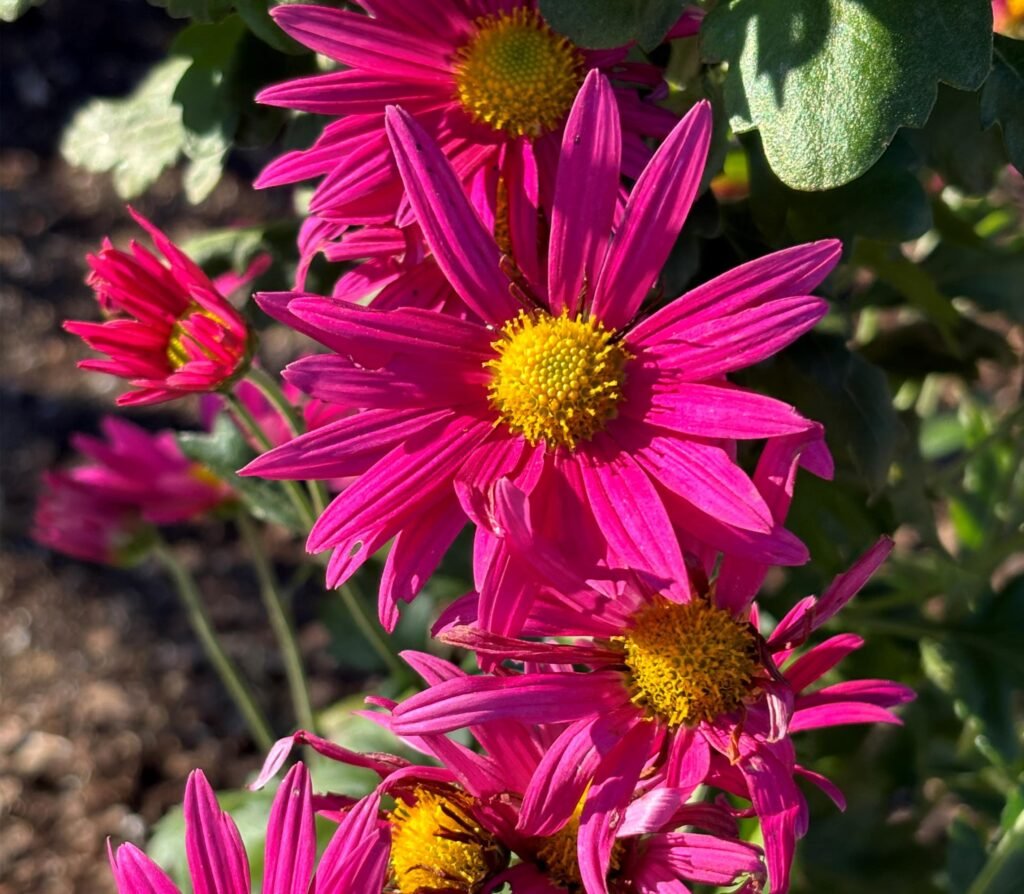We have some thoughts on mums...
Long-time friends of Yew Dell might be familiar with our staff’s focus on Hardy Garden Chrysanthemums. But they are a bit of an enigma. Hardy to what environmental conditions? What distinguishes hardy mums from the less hardy ones? What in the world is the difference between Chrysanthemum, Dendranthema, Leucanthemum, etc.?!
A taxonomical roller coaster
The whole plant genus of Mums has gone through a lot of confusing and controversial taxonomic changes in the last decade or so. I won’t get too deep into all of the genetic research that has led to the genus of Chrysanthemum being broken up. What you should know is that Chrysanthemum and Dendranthema are synonymous. Nurseries and retail garden centers can use either name to refer to the same type of plant. Let’s discuss the primary distinguishing factor that separates Hardy garden mums and most of those less-hardy mums purchased for seasonal color at the big box stores. The latter are cultivated varieties that have undergone extensive selection and genetic manipulation for traits that promote a more dome-like, rounded shape and a plethora of flowers, and especially for ease of cultivation so that millions can be clonally propagated for uniformity. Hardy mums are much more of a slowly-spreading, moderately sized perennial.
So, where are “Hardy” garden mums hardy?
Chrysanthemums have a very broad hardiness range as they are able to survive in zones 3-9. Although, within this hardiness spectrum, a gardener may need to treat their mums differently. The more seasonal mums have a difficult time successively re-flowering year after year, even if they do survive the winter in the Southeast. Also, because they have been bred extensively for aesthetic qualities, there has been less work invested in the overall hardiness and vigor of the plants. The hardy mums are very reliable as perennials, reblooming year after year. It should be noted that although they are full sun plants in general, in our area of Kentucky (zone 7a) they certainly wouldn’t mind a little shade to help them through the summers. Cutting back your hardy mums is also of great importance not only for their form but also for better fall blooms. Since these mums vary in height from 1.5 to 3 feet, they are prone to flopping, which can create an unsightly bare spot where there is an absence of lower foliage.
The hardy mums we propagated from cuttings here at Yew Dell come in a wide array of bloom colors such as pink, yellow, orange, and red, and we are currently in correspondence with the Chrysanthemum Breeding Program at the University of Minnesota to bring in even more varieties! After transplanting these rooted cuttings to larger pots, we were concerned by our observation of many tiny, black, host-specific aphids along the upper stems. Because we do not use insecticides in the nursery, we were soon delighted to see tons of ladybugs handling our problem for us and the hardy mums haven’t shown any signs of pest or disease damage since.
What about the rest of the year?
Although these plants are very hardy and will reliably come back next spring, they will die back to the ground. If you are a gardener who enjoys seeing greenery throughout the year, try to pair plantings of the hardy mum next to evergreen perennials or coniferous groundcovers. Hardy mums bloom a bit later than your seasonal mums, flowering here at Yew Dell around late October/early November. It may take some patience to wait for this floral display after planting in the spring (or plant in the fall for instant color!), but these plants will be some of the only ones in your garden exhibiting such a floriferous burst of color at this late stage of the year. They also make a great source for pollinators at a critical time of the season.
Some say there will always be a place on the porch for seasonal mums, placed in pots for festive ornamentation alongside autumn gourds and the like. But we should recognize and appreciate the wide variety of Chrysanthemums available in the trade. We hope to see you all out in the gardens next month to admire our hardy mum specimens and perhaps take home a few for yourself!

Jeff Margreiter
Nursery & Greenhouse Manager


